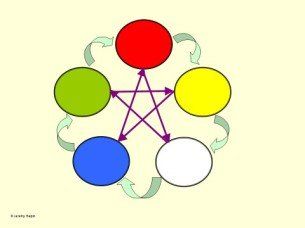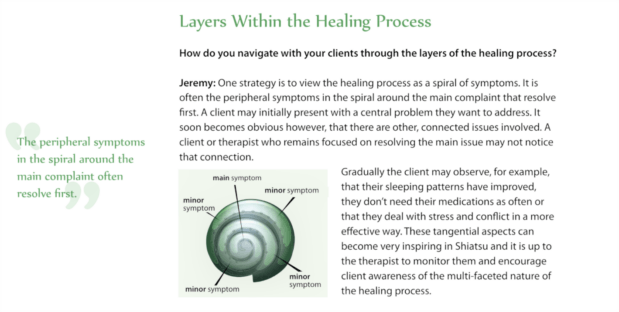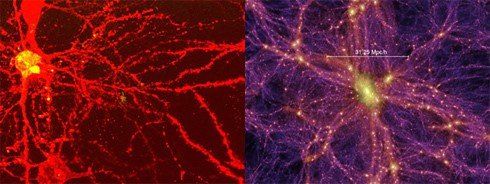Principle of
CYCLES
“Fractal geometry is everywhere…It’s the cycle of life.”
– Ron Eglash
READ and LISTEN along the Principle of CYCLES
We now find ourselves cycling around to the fourth Universal Principle that sustain life, the Principle of Cycles. Let’s give it a spin:
”The health and survival of all sentient beings has a direct correlation with the ability to observe, understand, and adapt to the cycles of nature.”
That sounds reasonable, doesn’t it? We might even call such a statement self-evident. Evidently not.
The taming of the shrew
Patriarchal cultural dominance over many thousands of years has instilled an innate fear and suspicion of the feminine. This is most notably seen in our attitudes towards our mother, earth.
We have learned to fear nature and, perversely, have become proud of our ability to control or tame her wild and free spirit. Only now are we beginning to see that such control is both illusory and dangerous to our very survival.
Spinning the wheel
“The cyclical nature of the universe informs its inhabitants of patterns that can be used to understand what has and will happen.”
Up until fairly recently in our history, the earth has undergone a sustained period of stability. This has been due to a combination of factors like a wide biodiversity of life (ensuring resilience – more on this in future editions of the Universal Principles) and consistent climatic conditions. This stability, predictability and an understanding of cycles has had a major effect on our civilization:
- The rise of agrarian societies between seven and ten thousand years ago meant we could depend upon reliable harvest cycles for consistent food supplies.
- Stable climate and food production enabled trade and the rise of predictive economic models to chart them
- Global navigation via sea and air travel depended upon the predictive reliability of weather patterns and in the case of the early sailors, celestial navigation of the circling heavens
- The arrival of the space age required an expanded view of cycles outside of our planet to calculate safe passage to the moon and beyond
- Back in the human body, the cyclic patterns of the heart can be read (via ECG graphing) to predict or diagnose possible risks to health
Which brings us to an interesting correlation between cyclic frequencies and the patterns that are predictably linked to them.
”All energy has a vibration and a frequency which creates cycles.”
The very geometry of our life is expressed this way so it is useful to be aware of them. But let us move from the abstract to a little closer to home.
What goes around, comes around
Modern societies have divorced themselves so much from nature and its cycles that we have become unaware of them. The transition from life on the land to urban dwelling has meant much of the population becoming separated from nature still further.
Even the changes of the seasons can be largely mitigated into an outward distraction or inconvenience due to our climate-controlled buildings and transport between them. Outside of strong physical exertion, how many of us are even aware of our own breath? Many of my female clients are not particularly connected even with their own menstrual cycles (and often suffer for it) either through a general disconnection from their body’s cycles or having it masked from them through the use of hormone-based pregnancy prevention.
In traditional Chinese medicine it is, appropriately enough, the Earth element that rules over the cycles in the body:
- The diurnal cycle governing sleep patterns
- Menstrual cycles and hormonal balance
- The cycles of homeostasis balancing blood sugar, blood pressure, body temperature, appetite and alertness
Of course we can choose to ignore these inward and outward cycles but when they come around again we probably won’t like the dis-eased harvest we reap.
Fortunately, what goes around can also come back around in better shape than it left. In the healing process there is often a cyclic, healing spiral at work.
This is where the first symptoms to resolve are those at the periphery. For example, a person may present with, say, lower back pain. The first things to improve may be related but peripheral issues such as sleep, energy and mood. As treatment progresses, the central issue can be confronted more clearly.
Entropy, syntropy and energy management
In human law, ”Ignorance of the law is no excuse or defense in breaking it.” It is our duty to be aware of the law. Cosmic Law takes this one step further: ”Ignorance is the crime.” It is the disease whose only cure is enlightenment.
Drew Brophy: A life well lived
The peril of ignorance regarding cycles is that we treat the world as a linear pipeline of infinite resources that will run forever. The Principle of Cycles addresses this:
”Entropy/Syntropy:
Entropy is the amount of chaos, or the loss of energy in a system. Syntropy can be explained as the amount of order or, the ability to retain energy.”
So how might we retain energy then? Why, cycle it back into the system through energy management of course:
”The output of one part, section, or system is the input of another. The further this principle is repeated, the more energy is recycled and entropy is reduced.”
Entropy only occurs in a closed system with energy moving only in one direction: towards dissipation. It does not have to be that way. Here are a few trend reversing examples:
- Poly-culture vs mono-culture farming. Where mono-culture farming depletes the soil and requires massive amounts of ”assistance” in the form of artificial fertilizers and toxic chemical pesticides that in turn, deplete and toxify the soil, poly-culture methods supports greater diversity, resilience, sequesters more carbon and often works as natural pest deterrents, reducing or eliminating the need for pesticides.
- Re-wilding and the ”80-20 system”. This is worth a whole discussion in itself but for now we can say that the entropic trend can be largely reversed by allowing the vast majority of land to become, once again, wild reserves. Paradoxically perhaps, this actually increases effective agricultural yields while contributing to the biodiversity of plant and animal life.
- Production cycles that have recycling in mind from the beginning of the process. This builds syntropy into the system from the beginning rather than as a token, poorly executed afterthought.
The beauty of truth and the truth of beauty
Despite endless propaganda to the contrary, our world does not need to descend into an ugly, urban, apocalyptic landscape. Quite the contrary, we are ”hardwired” to understand the beautiful truth:
“The ability to observe and recognize order and functionality is encoded into DNA and decoded as beauty. When a pattern has resonant functionality, harmony emerges between the frequencies of the observer and the observed and beauty is experienced.”
The Principle of Cycles offers more than just, well, a cycle. It spans the recurring patterns of the fractal nature of our inward and outward universe:
”The universe is composed of fractals which are recurring patterns that are self-similar across scale. The information of the macro level cycles have a proportional relationship to the micro and vice versa.”
This is a cause for hope in our relationship with nature. Every successful formula we discover at one level will have a very good chance of succeeding at others. We won’t have to reinvent the wheel, then. We just need to understand its cycles.









